Don't wanna be here? Send us removal request.
Text
WOII Compulsory: In Summary
My favourite part of this module is that I have learned a variety of topics and discovered many different inspirational artists, their creative processes, and their work. This has been an eye-opening journey that sharpened my understanding of art, design, typography, and illustration within broader social, political, and cultural contexts.
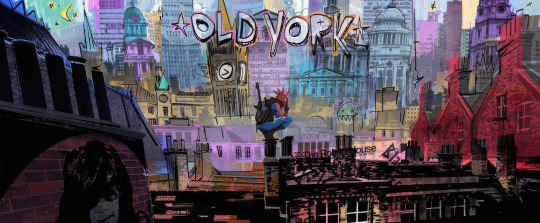
Each week introduced me to new frameworks and perspectives that challenged how I need and interpret both my own artworks and others. Having different perspectives on every piece is so crucial and really joyful, I believe that it is just one of the most crucial things in this design world nowadays. And I have started to realize not only what kind of design I love to create but also why I create.

Since We have a variety of topics, Week 1 & 2: Phenomenology and Aesthetics, I learned to focus on perception and lived experience, how we feel and respond to art. This helped me slow down and be more present when viewing or creating work and become more sensitive to the visual language.
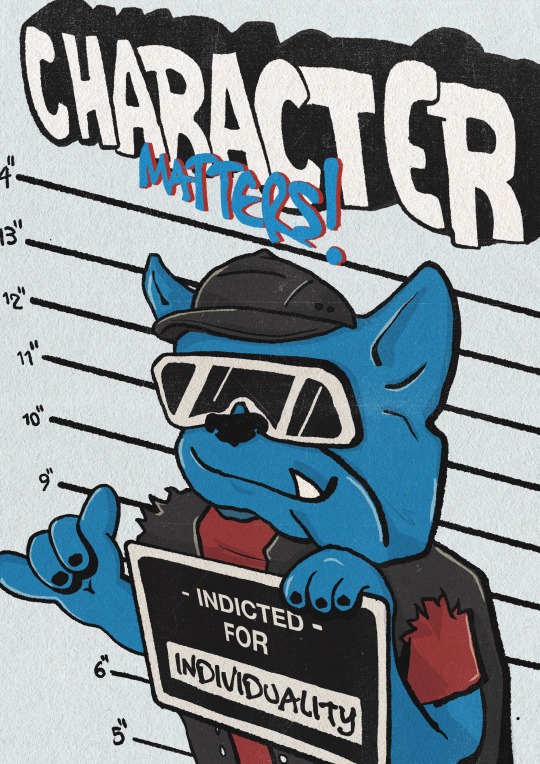
An interesting topic: Postmodernism pushed me to question design principles and originality, and the "truths" we often accept in design and illustration. Based on these topics, I researched more on modernism, postmodernism, and contemporary artists and artworks and hunted a number of inspiring works that really spoke to me, motivating me to create more and more.
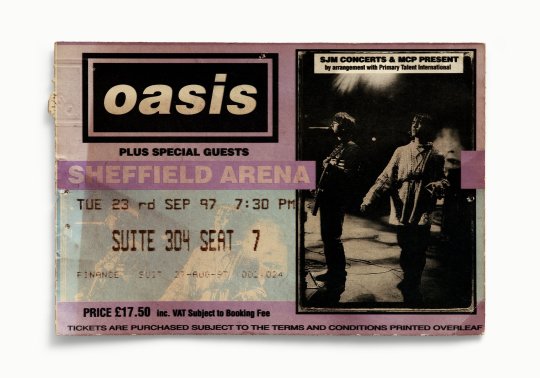
[Word Count: 228]
Image Reference:
"Spider-Man: 10 Locations Outside NYC the Games Should Explore." Game Rant, 30 Mar. 2024, https://gamerant.com/spiderman-locations-outside-nyc-games-should-explore/.
Beuren, Victor. Victor Beuren Portfolio. https://victorbeuren.com/. Accessed 12 Apr. 2025.
Threeofive. Threeofive on Pictoplasma. Pictoplasma, https://home.pictoplasma.com/artist/threeofive. Accessed 12 Apr. 2025.
Hayward, Blaise. Tickets Please. https://www.blaisehayward.com/tickets-please-index. Accessed 12 Apr. 2025.
0 notes
Text
WOII: Week 11 - Postmodernism
As a huge fan of playful colors, layered, complex compositions, and experimental typography, this week’s topic, Postmodernism is a really good daydream for me. Postmodernism is simply a movement that breaks away from the traditional rules and ideas, which carries a huge shift from modernist principles, all about simplicity, clean lines, and Less is More. Postmodernism often comes up with different mixed styles, and challenges the idea that there’s only one “right” way to create or design stuff.
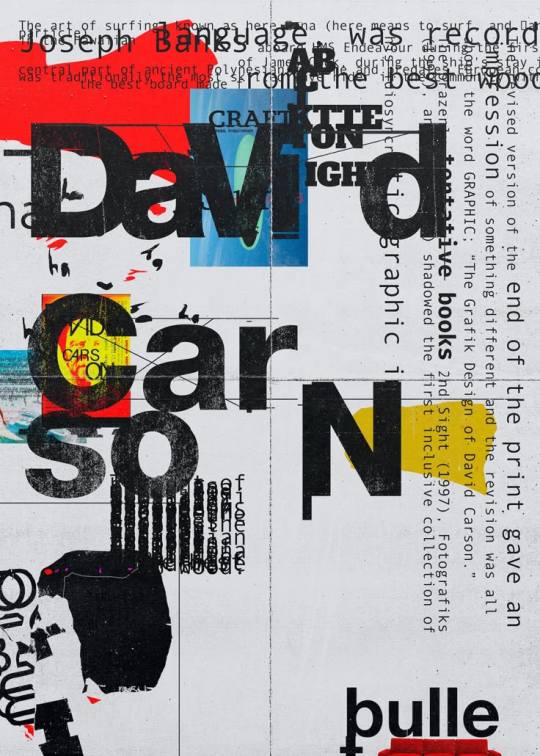
I just realized most of my favourites are mostly postmodernism and contemporary artists. Starting with David Carson who is known for experimental typography and styles, and my all-time favorite, Jean-Michel Basquiat is an amazing artist with strong postmodern elements, challenged art world hierarchies and racial narratives, his usage of incorporated text and symbols to disrupt traditional representation are truly generational.

This week’s in-class activity was one of the most fun activities so far. Me and my friend, Seoyoung broke some rules and had some fun making the extraordinary advertisement poster for the phone charger.
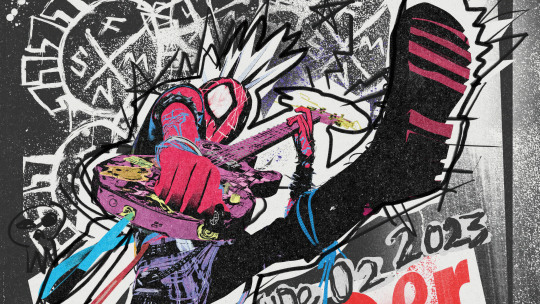
Postmodernism has a huge move to the design we create today, questioned the idea of the design should be clean, minimal and even functional (like in modernism). Like us in design school, taught design principles like grid systems, compositions, hierarchy, it powers us to see things differently and create new interesting visuals. Like Spider-man into the Spider-verse animation film, a character is an excellent example of postmodernism in character design. The whole character is the rejection of the polished mainstream animation style by using stylistic inconsistencies in his animation with beautiful mixed-media visuals like half-tone effect and extra sketch lines.
youtube
[Word Count: 272]
References:
Levanier, Johnny . What is postmodern design: how the reigning style of the late 20th century works. 99designs, 16 Dec. 2020, https://99designs.com/blog/design-history-movements/postmodern-design/.
Failes, Ian. “The ‘Across the Spider-Verse’ Spider-Punk Character Hobie Was Animated with Different Frame Rates for Different Parts of His Own Body and Accessories.” befores & afters, 17 Jul 2023, https://beforesandafters.com/2023/06/17/the-across-the-spider-verse-spider-punk-character-hobie-was-animated-with-different-frame-rates-for-different-parts-of-his-own-body-and-accessories/.
Poynor, Rick. “Did We Ever Stop Being Postmodern?” Design Observer, 16 Oct. 2011, https://designobserver.com/did-we-ever-stop-being-postmodern/.
In my submission I acknowledge the use of GenAI: Grammarly to check grammar, spelling, and improve sentence structure.
1 note
·
View note
Text
WOII: Week 04 Semiotics
Semiotics is our daily universal unspoken language or a study of signs and symbols and how use of interpret them. In the design world, especially graphic design, semiotics provides a powerful framework for understanding how visual elements convey messages and evoke responses. In simple terms, it's about understanding how things (images, words, objects, colors) come to stand for something else.
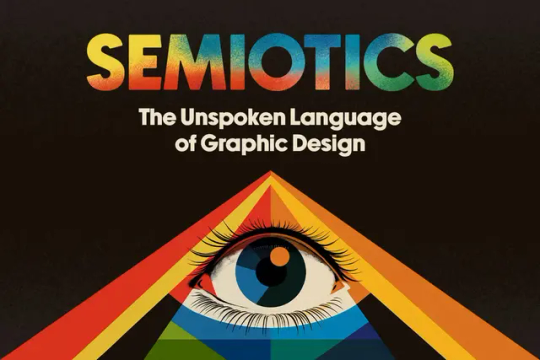
Semiotics can be broken down into three core concepts: Signs (the visual/ image, sounds, words, etc), Signifier (the physical form/ what we see), and Signified (the meaning or concepts the sign represents).
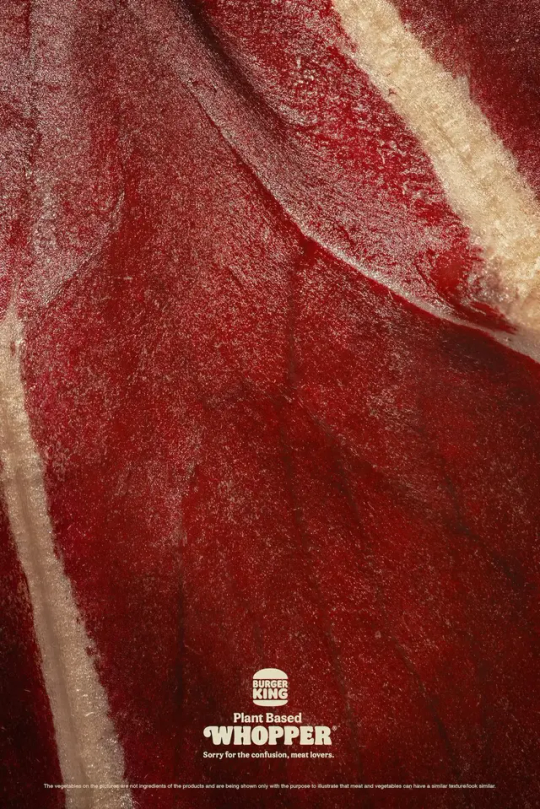
This week's activity was really fun, we analyzed and discussed semiotics few advertisement posters which were interesting. Another amazing design I found was a Burger King's Plant-Based Burgers ad. At the first look, a macro close-up shot of some red meat. But no, those are totally some vegetables (peppers, beetroot and radicchio). The tagline below reveals"100% Whopper. 0% Beef." this twist: “Sorry for the confusion, meat lovers.” This clever use of semiotics shows how design can manipulate perception by using signifiers (the bold text and macro image) to play with the signified (Burger King's plant-based Whopper is so close to meat, we can’t tell the difference.)
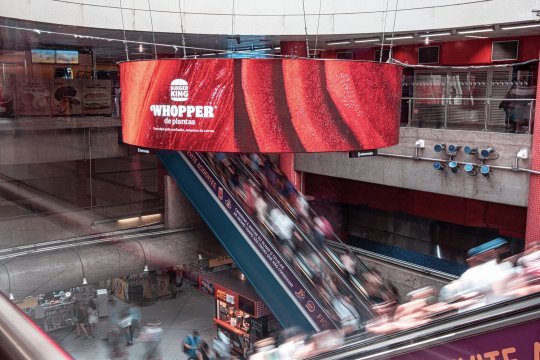
This design is one the best examples that tells Semiotics matter in the design world as well. Designers use it constantly, whether we notice it or not. From the choice of a color, font to image, they are selecting the best one that brings specific meanings to the audience.
[Word Count :248]
References:
"The Best Print Adverts: 50 Print Adverts That Continue to Inspire." The Empire, 28 Sept. 2023, https://theempire.com/best-print-adverts/.
John, Daniel . "Burger King Ads Are So Realistic They're Confusing Meat Eaters." Creative Bloq, 11 Aug. 2022, https://www.creativebloq.com/news/burger-king-ads.
“What is Semiotics” YouTube, uploaded by Occam’s Answer, 2 Feb. 2022, https://www.youtube.com/watch?v=R7VA95JdbMQ.
"What Is Semiotics?" Sign Salad, https://signsalad.com/our-thoughts/what-is-semiotics/. Accessed 4 Apr. 2025.
Dyess, Chase MBA. “Semiotics: The Unspoken Language of Graphic Design.” Medium, 25 Jul. 2023, https://dyessdesign.medium.com/semiotics-the-unspoken-language-of-graphic-design-592db4f6c226.
In my submission I acknowledge the use of GenAI: Grammarly to check grammar, spelling, and improve sentence structure.
0 notes
Text
WOII Compulsory: Week 5 & 6 - Design Analysis and Field Trip
This week, the topic ‘How to Analyze a Work of Design’ was really helpful for our design journey. I learned about the Design Analysis Framework and had a great time with the in-class activities and field trip.
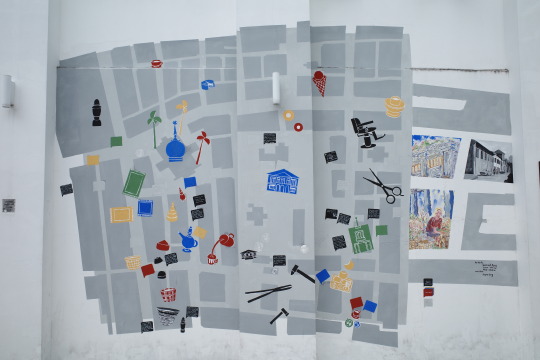
In the class activities, I brought my pocket notebook, camera (Ricoh GR), and AirPod case. Let me break down my pocket notebook, which I made myself for jotting down notes. Since I love the physical note-taking system, this notebook means a lot to me. It's been the source of many design ideas while I'm on the bus or waiting for food. I finished its look with a typography layout to reflect my love for hand lettering, which always reminds me to create art and design.
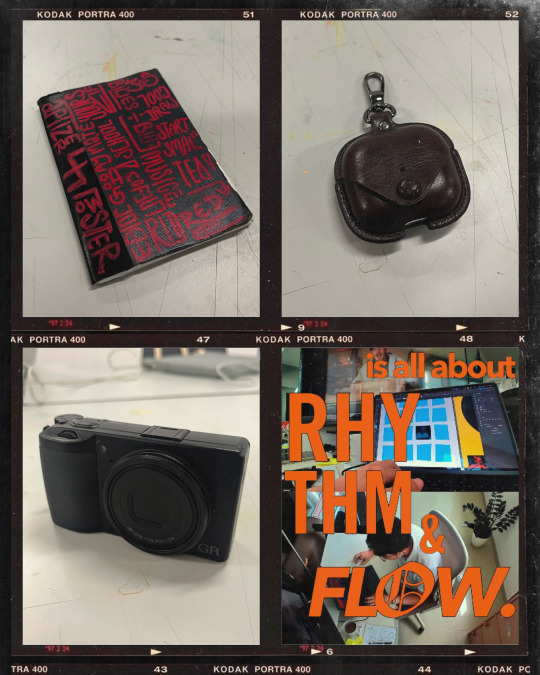
As for my camera, its design is compact yet powerful. The matte black body gives it a professional look, making it perfect for street photography. Another item I brought is my AirPod case. It gives a handcrafted feel because of aged leather materials and the stitching gives a feeling of a carefully designed product, unlike mass produced plastic cases. The aging process is something I really love about this as well. Overall, our things/ items around us can become a character or a memory when a piece of design grows with us. For a grouping, This in-class activity and the following items that I discovered during our field trip to Kampong Gelam is the “Memory” theme.
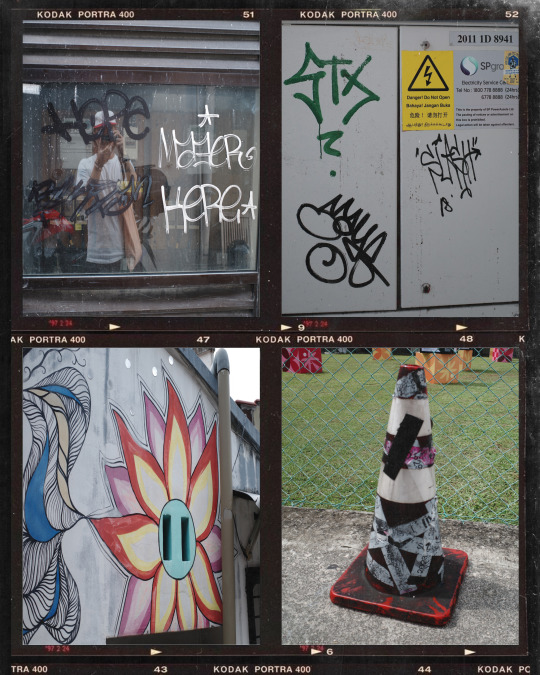
For another grouping theme is “Power”. I spotted and documented a lot of interesting things. Some were visually striking, while others were super informative signboard. They varied from interesting shop logos with the light bulb to store signages, and they all had a strong/ bold visual and emotional impact.
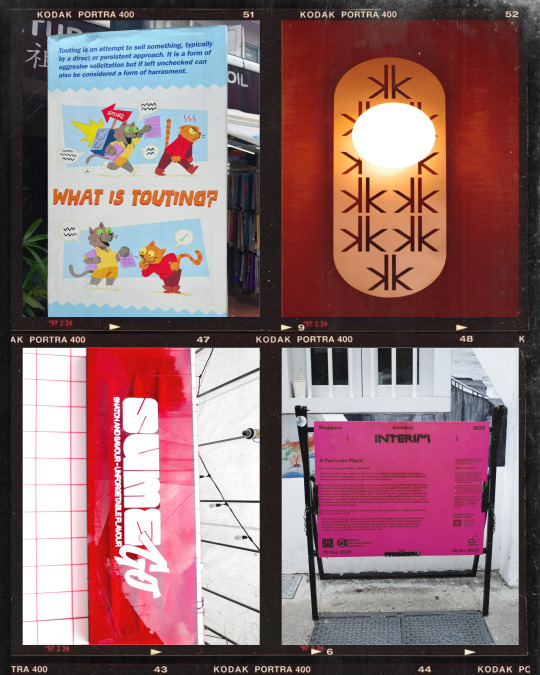
This week, I also really enjoyed reading two books: “10 Principles of Good Design by Dieter Rams” and “The Design of Everyday Things by Don Norman”. These books have really opened my eyes to “how design shapes our daily lives.

[Word count: 327]
Layth, Sihan. "7 Principles of Design from The Design of Everyday Things." Medium, 10 Apr. 2023, https://medium.com/@laythsihan/7-principles-of-design-from-the-design-of-everyday-things-48f90b25dc84. Accessed 24 Feb. 2025.
Ng, Andy. "Book Review & Insights: The Design of Everyday Things by Don Norman." Medium, 7 Jan. 2024, https://andyngj.medium.com/book-review-insights-the-design-of-everyday-things-by-don-norman-fc10bc7355a5. Accessed 24 Feb. 2025.
UX Sketching. "10 Principles of Good Design by Dieter Rams." Medium, 2 May 2023, https://medium.com/uxsketching/10-principles-of-good-design-by-dieter-rams-7b938428566. Accessed 24 Feb. 2025.
Twelve Books. Ten Principles for Good Design by Dieter Rams. Twelve Books, https://twelve-books.com/products/ten-principles-for-good-design-by-dieter-rams. Accessed 24 Feb. 2025.
In my submission I acknowledge the use of GenAI: Grammarly to check grammar, spelling, and improve sentence structure.
1 note
·
View note
Text
WOII: Week 2 - Aesthetics
This week’s topic, "Aesthetics," was interesting, and we had a fun time exploring it as a group. This week, we hit the streets, visiting nearby cafes and restaurants around our campus to find examples of aesthetics.
To me, aesthetics can be found everywhere—in design, architecture, clothing, photography, and even in the way we experience and interpret the world around us. It’s about how colors, textures, and visual elements create meaning and emotions.
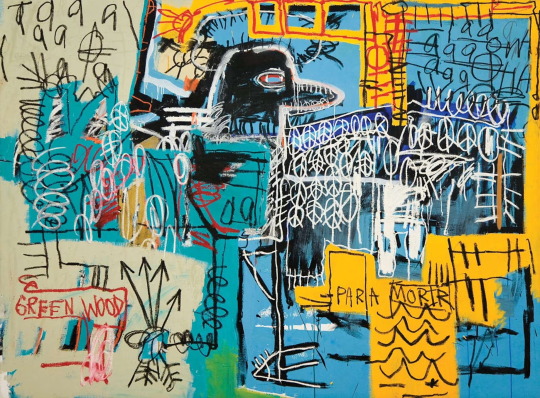
As an example, when we look at a beautiful watch, a unique coffee mug, or an interesting mural, and it makes us feel something, that’s aesthetics in action right in front of our eyes.
One of the most interesting finds was a vending machine called "WHAT THE CUP." Unlike regular vending machines, this one run 24/7 and offers over 300 drink choices. What makes it truly unique is not just its variety but also its eye-catching design and the subtle coffee aroma around it. The simple yet creative illustrations make it visually appealing, turning a normal vending experience into something engaging. In this case, it’s not just about buying a drink, it’s about the experience and emotions that come with it.
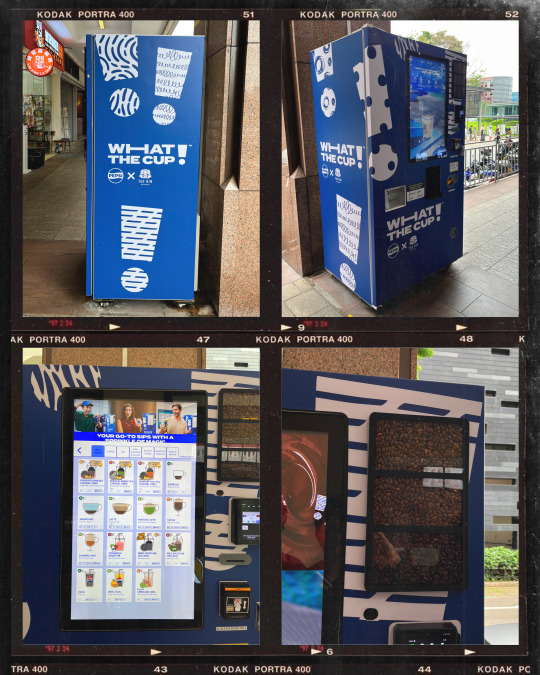
There’s a strong appreciation for film and cinematic aesthetics in both photography and videography. People love the nostalgic feel of film aesthetics: grainy textures, film borders, and soft focus all work together to create a film aesthetic. I applied a film-style border frame to my images for my Illustration Club's self-introduction presentation.
To make expressive aesthetics, I paired the film look with strong orange-colored captions and bold, punk-style typography. The contrast between the retro film border and the type created a playful tension that reflects both my personality and artistic influences. It was a fun way to blend different aesthetics, loud, and modern all in one cohesive look.

In the field of design, aesthetics plays a crucial role in how we communicate ideas. It’s important to carefully choose elements that align with the message we want to convey. Whether it's a logo, an advertisement, or a product, every detail matters in creating a meaningful and visually appealing experience.
[Word Count: 343]
What The Cup. What The Cup - About Us, 2024, https://www.whatthecup.sg/. Accessed 26 Feb 2025.
Liu, Yanhua, and Xiaoyan Lu. The Role of Aesthetics in Design and Everyday Life, 2023, https://www.frontiersin.org/articles/10.3389/fpsyg.2023.1234567/full. Accessed 26 Feb 2025.
"Basquiat's Materials & Techniques." MyArtBroker, https://www.myartbroker.com/artist-jean-michel-basquiat/articles/basquiats-materials-techniques. Accessed 26 Feb. 2025.
In my submission I acknowledge the use of GenAI: Grammarly to check grammar, spelling, and improve sentence structure.
0 notes
Text
WOII: Week 1 - Phenomenology
Phenomenology is a new word that I just learned today and the concept has been around us for a while and it is very simple. It sounds like a big word for us but it is all about how we experience things in our minds rather than just what they are.

Let’s Start with some clear examples/ breakdowns: Imagine we are holding a donut. we can see it, touch it, smell it, and even taste it. Now, think about this: how do we know it’s really an apple? Because we experience it! It’s not about the donut itself, it is about how you see, feel, and think about the donut. From my point of view, we can also understand that from us listening to music, the same song can make one feel nostalgic and another person feel energized from it.
From the simple activity, we divided into four groups unconsciously like: Time Photography, Time Drawing, Shadow Photography and Shadow drawing. From this activity, we can see how us not experiencing thing in the same way. A group thinks that they can describe “time” by drawing while others choose to describe with photography. Plus, I photographed a worn-out leaf to represents the passage of time in nature, showing sign of delay.

I believe that Phenomenology is highly relevant to design and creative fields because it shows us to consider how people experience what we create. Whether we design posters or websites, understanding how users feel and interact with design elements is crucial. Overall, it reminds us that our daily life/ reality is not only just about physical objects but also about how we interpret and feel the world around us. By understanding this, we can appreciate more the depth of our daily life experience, improve design thinking/ making, and reminds us to be more open-minded to others’ perspectives.
[Word Count: 307]
Gallagher, Shaun. “Phenomenology.” Frontiers in Psychology, U.S. National Library of Medicine, 2019, https://pmc.ncbi.nlm.nih.gov/articles/PMC6468135/. Accessed 8 Feb. 2025.
Smith, David Woodruff. "Phenomenology." Stanford Encyclopedia of Philosophy, Stanford University, 16 Nov. 2003, https://plato.stanford.edu/entries/phenomenology/. Accessed 8 Feb. 2025.
What is Phenomenology? YouTube, uploaded by Language and Philosophy, 2023, https://youtu.be/TG3fq-KHDDw?si=s4dXGiFz7JfkRUSi.
"We know…" Instagram, uploaded by randysdonuts, 27 June 2022, https://www.instagram.com/p/CfO2VWkrBDy/.
In my submission I acknowledge the use of GenAI: Grammarly to check grammar, spelling, and improve sentence structure.
1 note
·
View note
Text
CTS A | Week 10 Compulsory Question 3
When I think about collaborating with other programs, several ideas come to mind, but dance and music are the ones that stand out. I’m excited to share that I’ve already come up with a name for my collaboration project: “In Moment, In Motion”, a dynamic story by capturing the motion and stillness. A major inspiration for this project is Jonti Shepherd, a legendary photographer whose innovative approach. His work continues to fuel my creative process, and I aim to bring a better spirit into this project.

This collaboration is particularly exciting to me because it aligns with a few ideas I’ve had written down for a long time. I have a sketchbook filled with ideas- my “to-do” list which includes daily tasks, monthly goals, and dream projects. It's a place where I allow myself to freely jot down even the wildest ideas, without worrying about whether they’re realistic or not. The image below is a snapshot of one corner from my sketchbook.
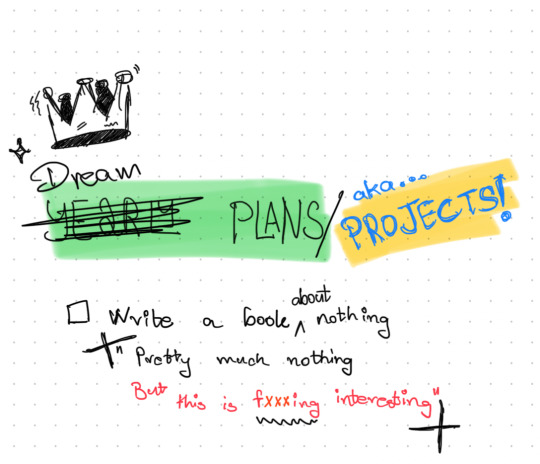
This might seem unusual at first glance, I have a strong example that proves this idea is not only possible but can also be incredibly inspiring. The book Codex Seraphinianus by Luigi Serafini, published in 1981, an iconic work that proves anything is possible with creativity. I could talk hours about this book and its impact, what excites me most is the potential to see my own ideas come to life. Here are some example of Codex Seraphinianus.

I also aspire to work within communities like the sports and food communities. I believe my illustration and design skills can help highlighting their main purpose and bringing like-minded people together.
Above all, my goal as an artist and designer is to break free from the limitations and I believe that creativity should know no bounds, and my interests span across various mediums. I spend most of my time drawing, practicing photography, and documenting my creative process through video. Self-awareness and emotional intelligence are key to understanding my strengths and areas for growth as a design student.
Word count : 337
Shepherd, Ross. "Codex Seraphinianus: The Weird and Wonderful Encyclopaedia No One Can Read." Medium, 18 Oct. 2021, https://rosscc193.medium.com/codex-seraphinianus-the-weird-and-wonderful-encyclopaedia-no-one-can-read-3a5c7fc4fdb9.
jontiwild. "Moment vs the shot" Instagram, 9 November 2024, https://www.instagram.com/p/DCHwodwSS_X/.
In my submission I acknowledge the use of GenAI:Grammarly to check grammar, spelling, and improve sentence structure.
0 notes
Text
CTS A | Week 11 Compulsory Question 2
In Week 2 of our studio, we had a group activity called the “Research Framework”, where each of us came up with our own ideas to complete the task within a short time frame. This experience made me realize how conflicts can arise when there are either too few ideas or too many ideas on a project. The challenge, however, lies in the process of negotiating and convincing the team of the value of our ideas—and I actually find it both fun and rewarding. One key takeaway for me has been the importance of adopting a Growth Mindset. In the past, I would complete tasks like homework without revisiting them for improvement. But as I worked through projects like the video editing assignment (Week 6), poster designs, and photography, I began to appreciate the value of refining and improving my work.
One of my favorite photos from the “Homeward Bound” series came after realizing my first idea wasn’t quite right. If I hadn’t pushed myself to try again, I wouldn’t have captured the shot I’m most proud of today.
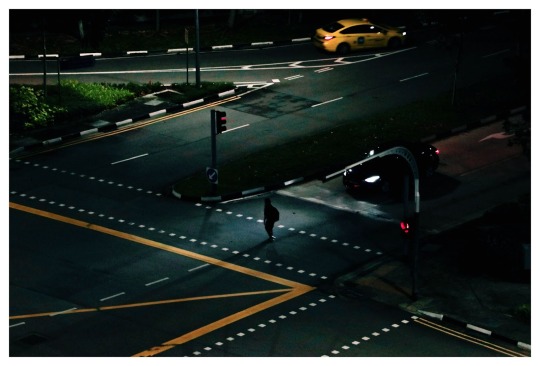
I also believe that being mindful of others is key to both good design and good teamwork. It’s important to understand when teammates might need more time to generate ideas or when they’re struggling with a part of the project. Time management and self-awareness are areas I’m actively working on improving. In the first month of the semester, I was struggling with staying productive, so I discovered the “5 Whys” technique, which has been a great tool for problem-solving and self-improvement.
For me, documentation has been one of the most effective tools for visualizing and refining ideas. I’ve been journaling for years, and I find that it helps me capture and evaluate my ideas before they fade away. The process of sketching and reflecting is essential for bringing my concepts to life. In the stage of polishing my ideas, I’ve found that researching and analyzing reliable resources is equally crucial to enhancing my designs and satisfying my curiosity.
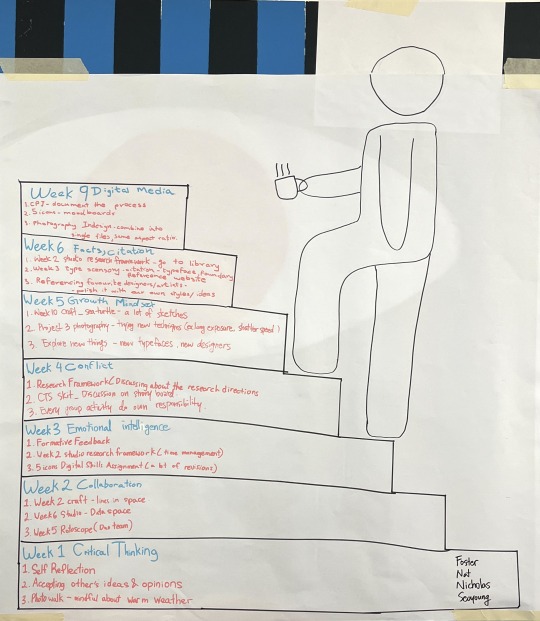
Word count: 337
Mind Tools. "The 5 Whys Technique." Mind Tools, www.mindtools.com/a3mi00v/5-whys
In my submission I acknowledge the use of GenAI: Grammarly to check grammar, spelling, and improve sentence structure.
0 notes
Text
CTS A | Week 10 Compulsory Question 1
The Critical Thinking Skills A (CTS A) module might sound a bit dry at first, but I honestly believe it’s one of the most important courses for our first semester. It’s all about helping us understand who we are and defining our goals for the future. Even if we don't always look too far ahead, CTS A is with us from day one - whether we’re learning mindfulness or diving into fun activities like designing a growth mindset logo with an unmastered hand.
One of the most exciting (and sometimes challenging) parts of CTS A has been collaboration. As a designer, I'm used to working solo, from sketches to final pieces. But in this class, we’ve been working as teams, and it's been such a great experience! Not only have I definitely improved my communication skills, but I’ve also learned how important it is to share ideas and be open to feedback. For example, we worked together on a visual metaphor project where we created a jellyfish (yes, a jellyfish!) - an idea that sparked a lot of questions, but also a lot of great conversations. The best part? We communicated really well as a team and managed to finish the project ahead of time, each person taking responsibility for their part and helping out when needed.
As a design student exploring new ideas and working toward both short- and long-term goals, I believe that emotional intelligence is key to success. I love meeting new people and maintaining strong relationships at the same time, which is essential not only in design but in life. To wrap up, I would like to finish with one of my favorite quotes about teamwork and collaboration: “If you want to go fast, go alone. If you want to go far, go together.”
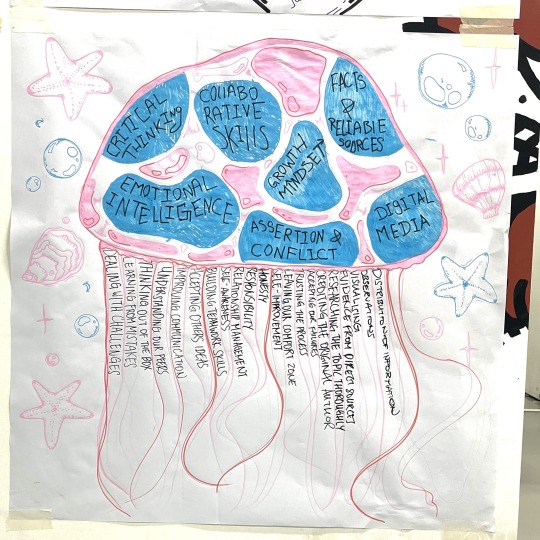
Word counts: 295
Eyewrite. "If You Want to Go Fast, Go Alone. If You Want to Go Far, Go Together: African Proverb." Why Eye Write, 1 Jan. 2022, www.whyeyewrite.com/2022/01/01/if-you-want-to-go-fast-go-alone-if-you-want-to-go-far-go-together-african-proverb/.
In my submission I acknowledge the use of GenAI:Grammarly to check grammar, spelling, and improve sentence structure.
0 notes
Text
CTS A| Week 5| Growth Mindset
Today was one of the most exciting days at LaSalle so far. I've always loved the thrill of hands-on learning and hitting the road since day one, and today definitely delivered. We explored the campus, capturing a variety of logos and signs along the way. Afterward, we returned to class and each picked one logo to focus on, creating 15 quick sketches of it in just 30 minutes. Here’s the twist: we had to use our non-dominant hand for the sketches, which led to some surprisingly loose and uncontrollable results. My favorite sketch was the lowercase “camel” design, it just felt more friendly and fun. I even gave the “C” a quirky half-peanut shape. On the flip side, my least favorite was the one where I tried to experiment with the camel trademark, only to end up with a design that looked more like a "C" with two fingers.
This sketching exercise taught me an important lesson: we shouldn't just stick with what feels safe or familiar. When we push ourselves to try something new, the outcomes can be unpredictable, but in the best way possible. As a design student, I truly believe that curiosity and embracing new experiences are essential. They help me push boundaries, revisit old ideas, and transform them into something fresh or even cooler. Today’s lesson was a great reminder to experiment with different mediums and styles without worrying too much about whether they’ll "work." This mindset isn’t just for class projects or CTS A; it applies to life in general. I also made a note to revisit my type sensory task from Week 2 Studio, inspired by today’s exploration.


Word count: 274
In my submission I acknowledge the use of GenAI:Grammarly to check grammar, spelling, and improve sentence structure.
0 notes
Text
CTS A|Week 2| Collaboration
When it comes to collaboration, I can talk nonstop about my favorite collab and the collab that I am really looking forward to do. As a person with so many hobbies and being in different environments, I can feel and look at things from different perspectives. I could easily appreciate others’ thoughts and ideas. In our collaboration, we all were very flexible and open-minded.
At the start, I felt like our team was struggling a little bit to have one strong idea since we were on a short amount of time. But luckily, Nat, one of my teammates came up with a cool idea from her childhood TV program that was very popular in Singapore and we all loved the idea. In this case, I see myself, thinking too seriously but too loose at the same time, and group activity wasn’t easy for me because I worked alone most of the time. However, I tried to communicate and ideate with team members and actively participated. We all did a really good job of generating ideas and were almost perfectly done like crafting four different shapes with four teammates.

I mentioned above “almost perfectly done” only because we were on a short set amount of time to discuss our ideas. I love the idea of a caring environment and relieving childhood memories but I would probably make it more abstract by using only one tall rectangle with colored stainless steel on each side. I want to use an Abstract shape and colored stainless steel because I believe that catches more crowd attention and I can imagine how cool that 80-foot tall monument would be if I had more time or if it was a personal project.
(284 words)

0 notes
Text
CTS A | Week 1 What is Critical Thinking?
Before the class, I had a blur understanding of critical thinking and wasn’t sure what to expect. I learned the basic concept of critical thinking from my brother at a young age. This is about discipline, analyzing, and making right/ reasoned decisions but I didn’t know how to come up with the right reaction/ response when something new happened to me.
After the class, I realized that critical thinking is an essential, ongoing skill. It requires openness to different perspectives, making decisions based on facts, and applying knowledge to solve problems. It’s also crucial for self-awareness and communication.
I see mindfulness as a skill like a sport: the more we practice, the better we become. It’s about being present, patient, and open-minded, while accepting others' ideas and feelings. At first, I found the meditation exercises strange, but I now understand that they help us focus on the present moment.
I believe the present is the most valuable time we have, and we should live our best lives by helping and understanding others. A quote by Jimmy Dean recently resonated with me: “I can't change the direction of the wind, but I can adjust my sails to always reach my destination.” This reminds me that, although we can’t control everything that happens, we can control how we react.
The first day of school was a positive experience. I enjoyed the photo walk activity, met new friends, and had fun starting the year.
Word Count: 241
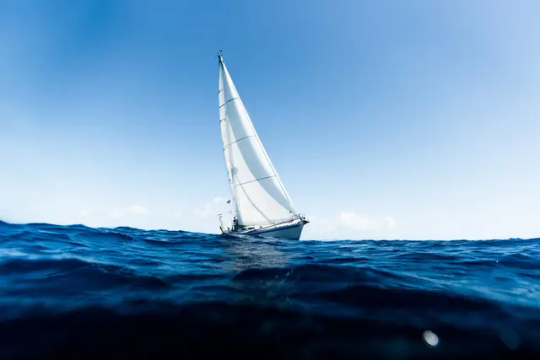
Vox. Why We Can’t Solve the Climate Crisis Without Energy Justice. YouTube, uploaded by Vox, 2 Sept. 2020, www.youtube.com/watch?v=x0vUsxhMczI?si=gwq8EUZedXCkUEmT.
Patel, Pr. "I Can’t Change the Direction of the Wind, but I Can Adjust My Sails to Always Reach My Destination." Medium, 14 Oct. 2023, medium.com/@officialprpatel002/i-cant-change-the-direction-of-the-wind-but-i-can-adjust-my-sails-to-always-reach-my-destination-63584b47c2c8.
In my submission I acknowledge the use of GenAI: Grammarly to check grammar, spelling, and improve sentence structure.
1 note
·
View note